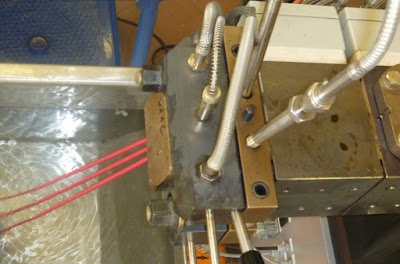Understanding how high-speed spectrometers measure color on manufacturing assembly lines provides a glimpse into the complex world of precision quality control and modern manufacturing techniques.
A spectrometer measures the amount of light absorbed or transmitted across different wavelengths. Color measurement involves analyzing the spectrum of light reflected off an object to determine its color.
In a typical setup on a manufacturing assembly line, a light source illuminates the product or material whose color we want to measure. This light source must remain consistent in its intensity and spectrum because any variation can influence the accuracy of the color measurement.
When the light hits the object, the object absorbs specific wavelengths of light and reflects others. The reflected light then enters the spectrometer. Inside the spectrometer, the light is dispersed, often with the help of a diffraction grating or a prism. This dispersion breaks the incoming light into its constituent colors or wavelengths, similar to a rainbow when sunlight passes through raindrops.
An array of detectors inside the spectrometer captures this dispersed light. Each detector is sensitive to a specific wavelength or a narrow range of wavelengths. By measuring the intensity of light each detector receives, the spectrometer builds a spectrum – a graphical representation of light intensity versus wavelength.
This spectrum effectively captures the color profile of the object, and a computation derives color values, typically regarding color spaces or systems like the CIELAB or RGB. These values provide a quantitative measure of the object's color compared to a standard or reference value.
In a manufacturing assembly line, the speed of this process is paramount. High-speed spectrometers capture and process data in real-time, allowing them to analyze the colors of objects as they race along the line. Suppose the color of a particular product deviates from the set standard. In that case, the system can instantly flag it for inspection or removal, ensuring that products maintain a consistent color quality throughout the production run.
The integration of high-speed spectrometers into manufacturing lines, coupled with sophisticated software, ensures that color consistency and quality meet the strict standards demanded by today's consumers and regulatory bodies. This method not only optimizes the quality of the final product but also minimizes wastage and enhances efficiency in production processes.
Micro-Epsilon stands as one of the top sensor manufacturers globally. For over 50 years, they have consistently provided reliable and high-performance solutions, especially in situations demanding high precision measurement or inspection. Their product line includes sensors for distance and displacement measurement, IR temperature measurement, and color detection, along with systems for dimensional measurement and defect detection.
The Micro-Epsilon colorCONTROL ACS7000, color measurement system, recognizes reference colors through direct comparison and distinctly identifies individual colors based on their coordinates in the color space. Equipped with a high-speed spectrometer, the colorCONTROL ACS7000 excels in applications that require online examination of colors and shades with utmost precision.
(508) 351-6200
https://a-pcorp.com




